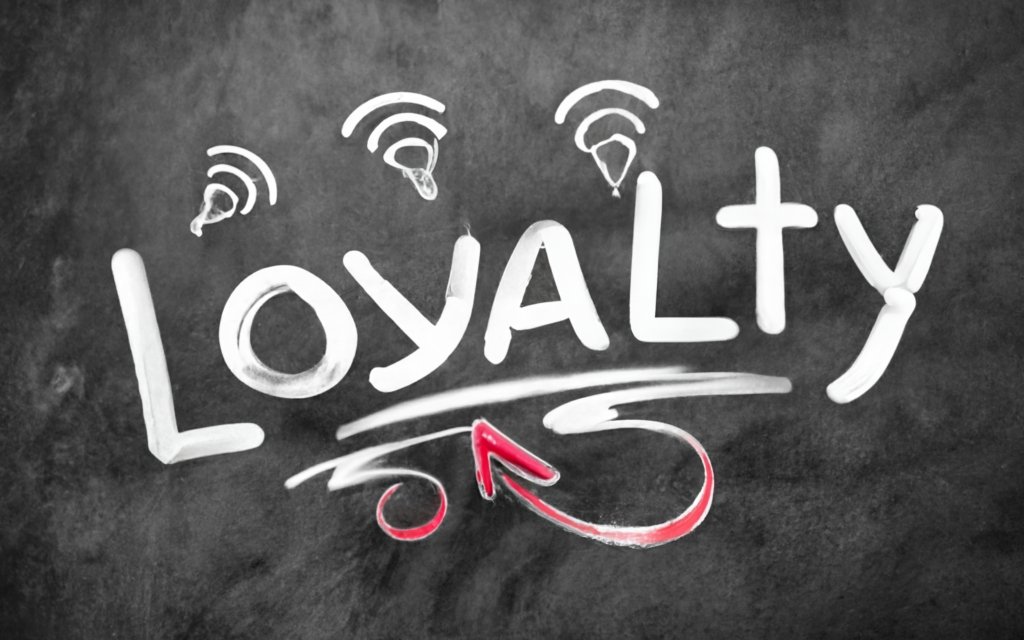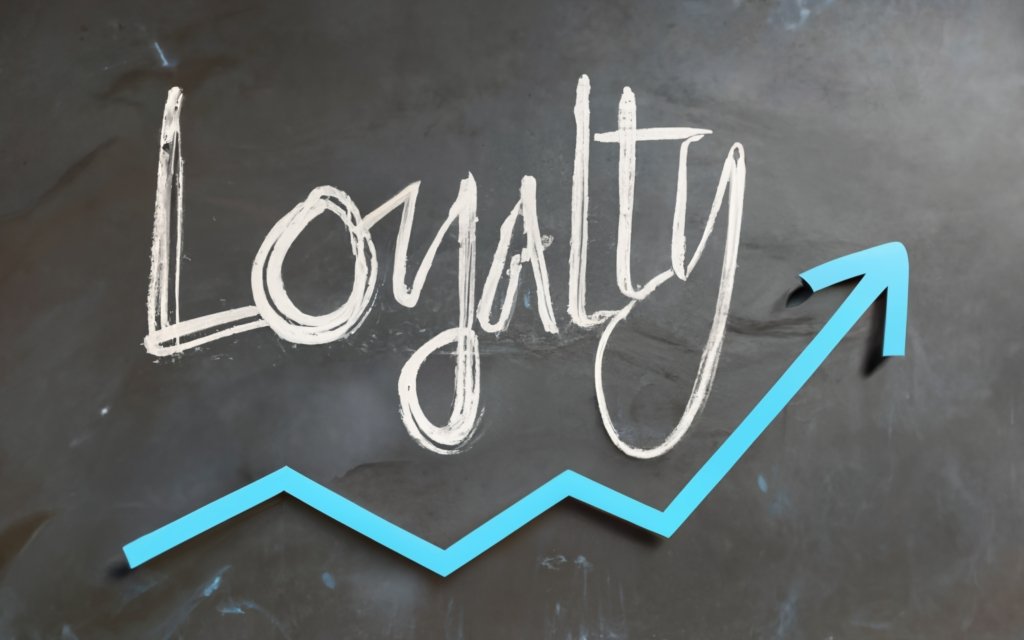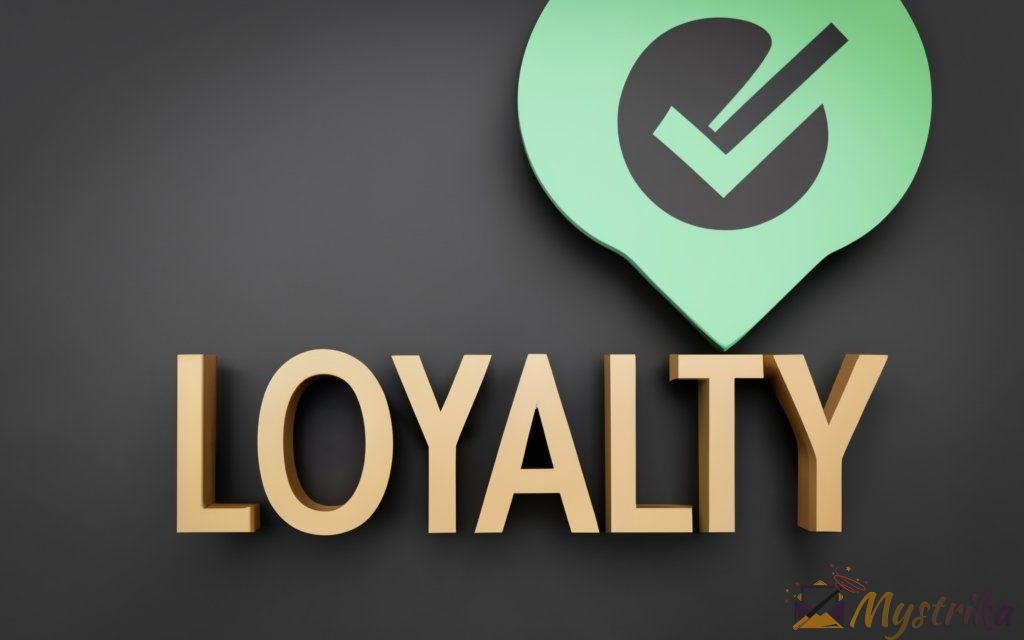Do your employees stick passionately by your company’s side, through thick and thin? Read on to learn the research-backed leadership techniques for inspiring fierce loyalty even in today’s skeptical age.
Understanding Loyalty in the Workplace
Let’s start this loyalty journey by getting on the same page about what employee loyalty means in a business context. After all, you can’t cultivate something without knowing what it is first!
Defining Loyalty in a Business Context
Loyalty in the workplace is about creating meaningful connections and cultivating a sense of belonging between employees and their organization. It goes beyond basic job satisfaction or motivation. Loyal team members feel intrinsically invested in their company’s purpose, values, and goals.
More specifically, loyalty shows up through:
- Commitment to staying with the company despite opportunities to leave
- Willingness to defend the company publicly and promote it to others
- Desire to exert extra effort to help the company succeed
Loyal employees tend to have an emotional attachment to the organization. They feel proud to work there, enthusiastic about their roles, and cared for as individuals.
Of course, loyalty is a two-way street. Employees offer commitment, discretionary effort, and advocacy. In return, they expect things like open communication, recognition, empowerment, and care from their leaders and organization.
When both sides consistently nurture this relationship, the bonds of loyalty grow stronger over time.
The Importance of Loyalty for Organizational Success
Now that we know what loyalty looks like, let’s discuss why it matters so much. Put simply: loyalty leads to better organizational performance.
Research shows that companies with highly loyal employees reap benefits like:
- Increased productivity: Teams work harder and smarter when loyalty is present. A study found workers who feel loyal perform 20% better.
- Higher retention: Loyal team members are less likely to leave for another job. Replacing them less often saves substantial time and costs.
- Enhanced innovation: Loyal cultures foster engaged employees who feel empowered to create and contribute ideas.
- Stronger employer branding: Loyal staff serve as brand ambassadors who recommend the company to others. This expands talent pools.
- Greater agility: Loyal teams embrace change more readily because they trust their leadership has their best interests in mind.
- Higher sales and profits: Customer-facing staff who feel engaged sell more effectively and drive revenue.
Clearly, leaders who neglect loyalty do so at their company’s peril. But with intentional effort, you can reap all of the many benefits listed above.
Common Reasons for Declining Loyalty
Despite its advantages, loyalty has undoubtedly declined in recent decades across many industries and roles. Trends like job-hopping and The Great Resignation signal this shift.
What’s behind the loyalty drop-off? A few key factors:
- Lack of trust in leadership. Professionals today are quick to leave managers they view as unethical or self-interested.
- Limited growth opportunities. Employees now switch companies more often to develop their skills and advance their careers.
- Poor work-life balance. Burnout is surging, and professionals seek environments that honor their lives outside work.
- Weakened social bonds. With remote and hybrid work, employees have fewer personal connections to colleagues.
- Disengagement from company purpose. Younger generations especially want to work for organizations aligned with their values.
- Competitive job market. When talent is in high demand, loyalty often decreases as employees explore options.
While these cultural trends make achieving loyalty harder, it isn’t impossible. Adaptive leaders can inspire deep workplace loyalty, even in our fast-changing times.
The rest of this guide explores practical steps for building an engaged, devoted team. With some thoughtful effort, you can buck the trends and foster an impassioned workplace bound by loyalty.

The Foundations of Loyalty
Loyalty doesn’t sprout up overnight. It grows gradually as leaders nurture certain cultural elements that bind employees to the organization. This section explores four foundational pillars that support lasting loyalty.
Trust Between Leaders and Team Members
Trust is the bedrock of any healthy relationship, whether personal or professional. Employees need to know their leaders have their best interests in mind and will follow through on commitments. Without this confidence, skepticism creeps in and erodes loyalty.
How do leaders build trust? Here are a few proven tactics:
- Be consistent. Follow through on what you say you’ll do, when you say you’ll do it. Don’t overpromise.
- Show integrity. Do the right thing, especially when it’s difficult. Make decisions based on ethics, not self-interest.
- Listen first. Seek to understand your team’s needs and perspectives before reacting. Don’t assume you have all the answers.
- Admit mistakes. You’re human – own up to errors quickly and sincerely. Use them as learning opportunities.
- Empower others. Grant autonomy suited to each person’s strengths. Don’t micromanage. It shows you trust their abilities.
- Offer clarity. Provide context and explain the why behind decisions. Don’t leave people guessing.
Rebuilding broken trust requires patience and consistency. But earning trust pays dividends through discretionary effort from staff.
Transparency and Open Communication
Trust thrives when communication flows freely, both vertically and horizontally across an organization. Transparency is vital – leaders should share business challenges and goals with employees to build shared purpose.
Two-way communication channels also reinforce trust in leadership. Create routines like monthly Q&As, pulse surveys, and open office hours. Respond to feedback constructively.
Cultivating this open culture isn’t always easy, but it sparks loyalty. People feel respected, valued, and invested when they have a voice.
Shared Vision and Values
Another foundation of loyalty is rallying your team around a compelling vision and core values. This provides direction and purpose beyond an individual job scope.
Communicate the company’s reason for being and where it’s headed. Show how each employee’s role ladders up to the vision – they’ll feel part of something bigger.
Define and embody clear values like integrity, quality, customer focus, etc. Hire and promote based on cultural fit to reinforce values. Employees that identify with them go the extra mile.
Investing in Professional Development
Employees today frequently change jobs to advance their skills. To inspire loyalty, leaders must show investment in each person’s growth.
Mentorship, training programs, and stretch assignments demonstrate your commitment to their development. Support side projects that energize them. Budget for continuing education.
Not only does this build capabilities, it also fulfils the human need to progress and feel valued by the organization. Loyalty swells when leaders care about helping employees reach their potential.
Of course, trust, communication, shared purpose, and growth must persist over the long haul. These pillars require deliberate upkeep through ups and downs. But they allow loyalty to stand strong even when headwinds blow.
With this foundation set, let’s examine specific leadership qualities and actions to further kindle workplace loyalty. At its core, loyalty is about respect, care, and inspiration. Model these attitudes, and your team will reciprocate with devotion.
Leadership Qualities That Foster Loyalty
With a foundation of trust, communication, purpose, and growth in place, leaders can further cultivate loyalty through their behaviors and attitudes. Let’s explore some key qualities and mindsets that inspire devotion.
Leading by Example
“Practice what you preach” rings true – employees look to leaders’ actions, not just words. Model the mindset and behaviors you want to see from your team.
Roll up your sleeves and pitch in. Arrive early, stay late if needed, and avoid delegating grunt work. Lead meetings and projects with energy and positivity. Make decisions with integrity even if inconvenient.
Essentially, exemplify the attitudes and work ethic you expect from others. Don’t fall into “do as I say, not as I do.” This breeds resentment, not loyalty.
Recognizing Achievements
Everyone appreciates acknowledgement for their contributions and progress. Recognition fuels engagement and loyalty when done right.
Praise publicly when appropriate. Privately, share specific observations of stellar work being performed.
Encourage peer recognition too – introduce shoutout boards, peer bonuses, etc. This builds camaraderie.
Avoid playing favorites, ensure recognition aligns to results, and keep it sincere. Employees see through empty platitudes.
Being Approachable and Understanding
An aloof or short-tempered leader shatters loyalty. Employees avoid engaging with those who react harshly or seem unavailable.
Listen patiently and seek first to understand. Respond calmly, not defensively, to concerns. Admit when you’re unsure and need to follow up.
Share personal sides of yourself. Relate to others’ realities outside work. This fosters human connections that inspire devotion.
Standing Up for the Team
Employees want leaders who have their backs, not those who point fingers when things get tough. Defend the team publicly, take heat from above, and lobby for resources to set them up for success.
Accept accountability as the leader – don’t scapegoat individuals if objectives aren’t met. Review what you could have done better to support and prepare the team.
These acts of courage reinforce that you and employees are on the same team. Loyalty surges when people know you’ll stand up for them.
Providing Meaningful Work
Engagement sags when employees feel their work lacks purpose or impact. Rally people around goals that matter and align to their strengths/interests.
Connect projects to the big picture vision. Remind individuals of how their role contributes to success. Autonomy also boosts meaning and loyalty.
Rotate team members through initiatives that stimulate them. Enable personal growth and variety in their responsibilities over time.
Promoting Work-Life Balance
In today’s burnout-prone environment, employees increasingly value personal time and wellbeing. While work demands can require long hours occasionally, make balance the norm.
Offer flexible schedules when possible. Discourage emailing after hours or on vacation. Understand when family/personal needs come first. Model healthy habits yourself.
Promoting balance demonstrates care for the whole person. Loyalty flows to leaders who honor lives outside of work.
Other Notable Qualities
While not exhaustive, additional qualities linked to inspiring loyalty include:
- Humility – Acknowledge you don’t have all answers. Seek input and listen.
- Authenticity – Bring your real personality; build personal connections.
- Decisiveness – Make timely calls to reduce uncertainty. Avoid waffling.
- Empathy – Relate to and care about people’s emotions and needs.
- Trust – Grant autonomy; avoid micromanaging.
- Self-awareness – Know your weaknesses and impact on others. Reflect.
Of course, these require consistency over time. Employees gauge credibility through actions, not speeches or mission posters.
The qualities above serve as a strong blueprint. But implementing them with genuineness and care is what converts them into inspiration and loyalty.
Let’s now explore additional tactics to actively strengthen loyalty across your team. While modeling the right leadership qualities sets the stage, putting targeted efforts into action cements engagement over the long term.
Actions to Strengthen Bonds of Loyalty
Beyond embodying the right qualities, leaders must take purposeful action to reinforce loyalty across their teams. Let’s explore some simple yet high-impact tactics.
Soliciting Regular Feedback from Team Members
Make pulse checks and feedback loops a routine. Don’t just do annual engagement surveys. Seek input quarterly, or even monthly, to stay connected.
Use quick polls and anonymous forums to uncover concerns early. Be receptive – don’t get defensive if criticism surfaces. Thank people for honesty.
Follow up on feedback actively. Loop back on action plans to rebuild trust. Unresolved issues fester and chip away at loyalty over time.
Celebrating Wins and Milestones
Pausing to recognize achievements makes employees feel valued. Celebrate project launches, tenure milestones, and personal wins.
Cater events to the team’s preferences – throw a pizza party or send gift cards if that’s more motivational than a stuffy banquet.
Share successes publicly using the company newsletter, website, and social media (with permission). This generates pride.
Encouraging Social Connections
Don’t underestimate the power of relationships and fun. Bonding with colleagues strengthens loyalty, especially remotely.
Organize team happy hours, step challenges, volunteer days, potlucks, and other activities. Support friendships forming through work.
Model work-life harmony – use offsites for shared experiences, not just more meetings. Left untended, social ties fray quickly.
Offering Personalized Growth Opportunities
Loyalty links directly to feeling valued as an individual. Tailor development to each person’s goals and motivations.
Hold quarterly career conversations. Fund training they request that aligns to growth plans. Accommodate stretch assignments.
Be flexible – support side projects some are passionate about even if not directly strategic. Saying “yes” boosts engagement.
Embracing Vulnerability and Removing Ego
Letting your guard down strengthens connections. Share your humanity – talk about mistakes, fears, challenges you face.
Adopt a growth mindset. Admit what you don’t know. Seek mentoring. Model that learning never stops, for anyone.
Default to curiosity over defensiveness in conflicts. Don’t pretend to have all the answers or get defensive.
Giving Credit and Appreciation
Recognize contributions publicly and generously. Avoid taking credit for work you didn’t do.
Thank team members often for their efforts. Write personal notes. Show you notice the “little things” they do.
Celebrate group accomplishments first. Avoid overly self-promoting. Share the limelight.
Gratitude and praise get remembered. Employees give their all when leaders acknowledge their impact. Even small gestures like buying coffee or assigning plush projects help individuals feel valued and loyal.
The actions above require some ongoing time investment. But they yield outsized returns through strengthened retention, innovation, and performance across loyal teams.
Of course, challenges will arise even in the most cohesive cultures. Next let’s examine some tactics for addressing common loyalty pitfalls.

Overcoming Common Loyalty Challenges
Even in the most cohesive cultures, obstacles to loyalty crop up. Leaders must tackle issues head-on through transparency, empathy and accountability. Let’s explore some frequent challenges and solutions.
Rebuilding Loyalty After Losing Trust
Trust is fragile – even respected leaders make missteps that erode faith. How you recover defines the relationship moving forward.
If you receive feedback that you’ve lost credibility, take ownership. Apologize sincerely without excuses. Commit to regaining trust through improved actions, not just words.
Follow up consistently to undo the damage. Keep communication open. Admit uncertainty. Allow time for wounds to heal.
Reflect on what cultural elements enabled the issue so it doesn’t repeat. Diagnose before prescribing changes.
Maintaining Loyalty Remotely
Physical distance exacerbates loyalty loss – remote team members have fewer emotional touchpoints.
Overcommunicate with offsite folks. Check in often via video chats, not just email. Learn about their lives, not just work. Visit them occasionally if possible.
Encourage remote team bonding. Reimburse virtual coffee chats and activities. Ensure remote folks are recognized too.
Listen to their unique needs. Don’t penalize folks for juggling work and personal demands at home. Empathize.
Inspiring Loyalty Across Generations
Multigenerational teams require adapting your style to resonate across mindsets and motivations.
Millennials and Gen Z desire coaches over bosses – take interest in their development. Boomers respect directing leaders focused on results.
Recognize generational events/trends to relate better. All value work-life balance – accommodate differences.
Discuss loyalty explicitly. What does it mean to veterans versus new grads? Reframe it as building a community at work.
Managing Loyalty and Accountability
You want devotion, but employees still need accountability. Balance these without compromising either.
Set clear expectations, then empower people with autonomy. Guide by principles, not controlling every task.
Address performance issues promptly and directly. In private, explain gaps and discuss solutions. Circle back on progress.
Focus conversations on behaviors, not the person. Express care for them as an individual – it’s about their future success.
Avoid blind loyalty – be open to feedback that you or other leaders need improvement. Dedication shouldn’t excuse misbehavior.
Addressing these pitfalls head-on deepens mutual understanding and trust. While bumps will arise, overcoming them together builds loyalty resilient for the long haul.
With strong foundations and proactive efforts, leaders can foster robust cultures worthy of devotion. But measuring engagement provides crucial insights for continued improvement. Let’s discuss ways to gauge loyalty.
Measuring and Tracking Loyalty
Implementing tactical programs is an important start, but leaders must also measure engagement and loyalty. Tracking metrics helps spot risks early and quantify progress over time.
Here are a few techniques to gauge the strength of loyalty across your team:
Employee Engagement Surveys
Periodic surveys evaluate satisfaction, belonging, and discretionary effort levels. Survey annually at minimum, quarterly for best results.
Ask direct questions like likelihood to recommend the company, intent to stay long term, and pride in their work.
Track trends over time. Break down results by tenure, role, and team. Dig into drops or plateaus.
Bolster with open comment fields. Mine text feedback to understand emotional sentiment and relational health qualitatively.
Employee Net Promoter Score (eNPS)
This metric directly measures loyalty. It asks employees how likely they are to recommend the company or team to others.
Score responses from 0-10. Promoters (9-10) show high loyalty. Passives (7-8) are vulnerable. Detractors (0-6) indicate disengagement.
Subtract detractors from promoters to calculate your eNPS. Benchmark across the organization. A positive eNPS signals loyalty.
Follow up with detractors on concerns. Seek to understand pain points and improve the employee experience.
Turnover and Retention Rates
While lagging indicators, these metrics quantify loyalty over time. Track both at company and team levels.
High retention suggests bonds strong enough to prevent attrition. Pockets of elevated turnover indicate problems.
Exit interview insights paint a picture. Are people leaving for compensation? Career growth? Leadership and culture? Address root causes.
Social Listening
Monitor online reviews and mentions to gauge external perceptions of your loyalty and culture.
Employees are your brand ambassadors. Sentiment in reviews reflects internal alignment and engagement.
Track ratings on sites like Glassdoor. Follow keywords and hashtags referencing your company on social media. Spot negatives quickly.
Analytics from employee advocacy platforms also indicate engagement levels. Higher sharing suggests pride and commitment.
Other Helpful Metrics
A few other metrics to consider tracking:
- Participation in optional company events and learning
- Uptake of referral bonuses by employees
- Percentage of retention bonus earners
- Sentiment analysis from pulse surveys
- Page views of internal job opportunities
As with any business initiatives, taking a data-driven approach allows refinement over time. Don’t view loyalty as a fixed achievement – monitor it continually as a vital sign of organizational health.
Now that we’ve covered strengthening and measuring loyalty across teams, let’s connect this back to impactful business outcomes.

The Lasting Benefits of Loyalty in Leadership
After exploring practical steps to cultivate loyalty, let’s connect this back to meaningful business outcomes. The tangible benefits make the effort well worth it.
Increased Productivity and Performance
Extensive research confirms that engaged, loyal employees deliver better results. They’re willing to push harder to exceed goals when intrinsically committed.
In one study, workers who felt connected were 20% more productive on objective metrics like sales and project output. Loyalty drives discretionary effort.
Higher quality work also flows from engagement. Loyal team members go extra miles to deliver excellence, not just completion. Their passion shows.
This heightened performance translates directly to the bottom line. It propels revenue, cost savings, profitability, and shareholder returns.
Enhanced Innovation and Creativity
Loyal cultures unlock innovation too. Employees feel empowered to question status quo and suggest improvements when leaders have their backs.
They contribute discretionary ideas to make the organization better, not just their own job scope. Loyalty broadens perspectives beyond personal interests.
Leaders who admit uncertainty and seek input tap into the collective wisdom of engaged teams. More creativity results compared to rigid, top-down cultures.
Psychologically safe environments allow innovation to flourish. Trust, openness, and support enable risk-taking and sharing raw concepts.
Stronger Employer Brand and Recruitment
Your current employees make the best brand ambassadors. When they feel valued, they paint an attractive picture to outsiders.
Happy team members spread authentic endorsements organically on sites like LinkedIn and Glassdoor. This expands candidate pipelines.
Referrals also increase when people are loyal. Engaged employees actively recruit for roles since they desire like-minded colleagues.
Compelling employer brands significantly lower recruitment costs. Talent flocks to companies known for inspiring loyalty in employees.
Higher Employee Satisfaction and Wellbeing
Don’t underestimate the intrinsic importance of employee happiness for its own sake. Beyond performance gains, loyalty boosts human outcomes.
Employees experience less stress and better work-life balance when they feel trusted and empowered by leaders who have their interests in mind.
Burnout is lower in positive cultures fueled by purpose and peer connections. Loyalty provides an emotional safety net during hard times.
The human need to bond and belong is fulfilled. Loyalty strengthens workplace friendships and relationships with leaders that enhance people’s lives.
While boosting loyalty takes work, the dividends make it one of the highest-ROI investments any leader can make. Start today and compound the benefits over time. Employees and organizations alike will reap the rewards.
Summary: Inspiring Loyalty as a Leader
Loyalty in the modern workplace must be earned through care, respect, and purpose. Leaders bear responsibility for inspiring it across their teams. Here are some top takeaways:
- Loyalty starts with trust. Deliver on commitments, admit mistakes, and avoid self-interest. Rebuilding broken trust requires consistency and patience over time.
- Transparency and two-way communication are critical. Ensure information flows freely. Give employees a voice and be receptive to feedback.
- Rally your team around shared vision and values. Connect work to a compelling purpose. Hire those aligned culturally.
- Invest in professional growth. Offer mentoring, training, and stretch opportunities tailored to each individual. This shows you care.
- Lead by example. Model diligence, integrity, positivity and humility. Employees look to your behaviors.
- Recognize and appreciate contributions. Praise progress publicly. Avoid taking credit. Say thanks often.
- Build personal connections. Get to know employees as people. Support friendships and fun. Bonding enhances loyalty.
- Listen with empathy and care. Don’t react defensively to concerns. Understand different needs and motivations.
- Measure and track loyalty metrics. Use surveys, eNPS, retention, and social listening to monitor engagement levels over time.
Inspiring deep workplace loyalty in today’s climate requires effort but pays dividends. By embodying supportive qualities and actions, leaders can build devoted teams ready to excel.
Frequently Asked Questions About Inspiring Loyalty
Q: How long does it take to build strong loyalty in employees?
A: Loyalty develops gradually over months and years. Consistency is key – it won’t happen overnight after one inspiring speech. Aim for steady progress through small actions versus expecting a radical transformation.
Q: What if leaders don’t model loyalty themselves to the company?
A: Hypocrisy destroys trust. Employees will disengage if leaders demonstrate self-interest or lack commitment publicly. Alignment between leadership’s loyalty and what they expect from employees is crucial.
Q: Is loyalty contingent on compensation and financial incentives?
A: Not solely. Compensation enables you to be competitive but does not create engagement alone. Loyalty stems more from emotional bonds, relationships, and higher purpose.
Q: How can leaders measure progress on loyalty?
A: Use pulse surveys, eNPS, retention rates, and social monitoring to quantify engagement over time. Trends indicate if efforts are moving the needle. Segment metrics by team and tenure.
Q: How can leaders balance accountability with showing loyalty?
A: Set clear expectations, give autonomy, then address gaps promptly and privately. Focus on behaviors, not the person. Express care for their overall success. Avoid blind loyalty that excuses misbehavior.
Q: What are early warning signs that loyalty may be deteriorating?
A: Increased turnover, negative reviews on employer sites, declines in discretionary effort, disengaged meeting behaviors, avoidance of communication, and direct feedback pointing to mistrust and cynicism.
Q: How can loyalty be ensured when much of team works remotely?
A: Overcommunicate through varied channels. Convey you’re there to support them. Invest in relationships beyond work tasks. Make remote employees feel recognized and included. Travel occasionally if possible.

